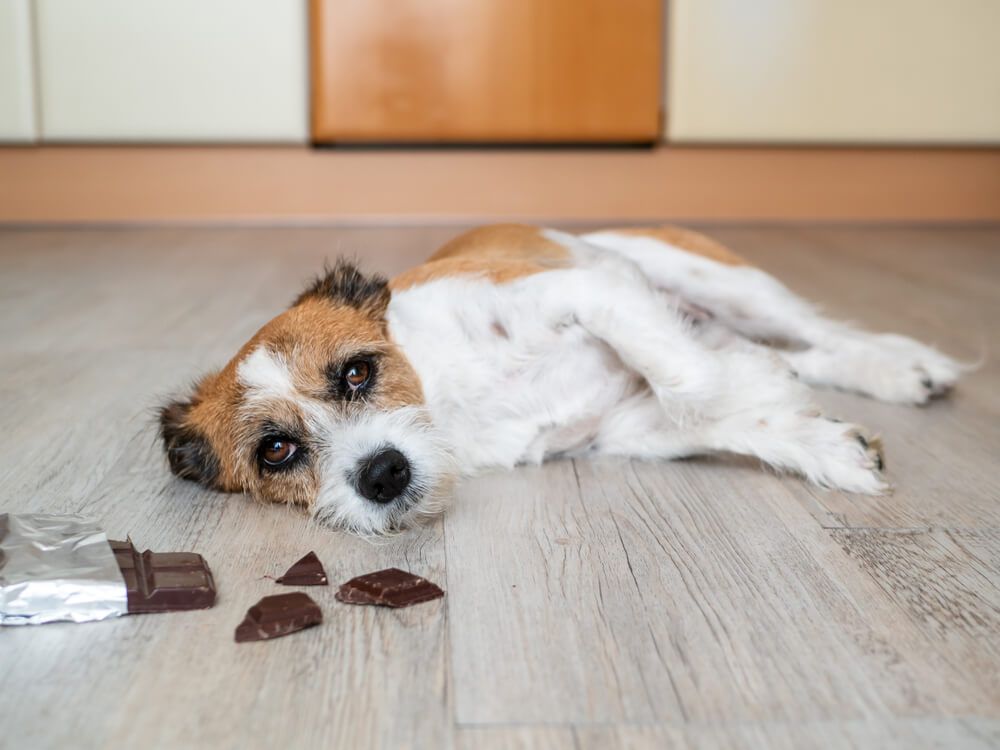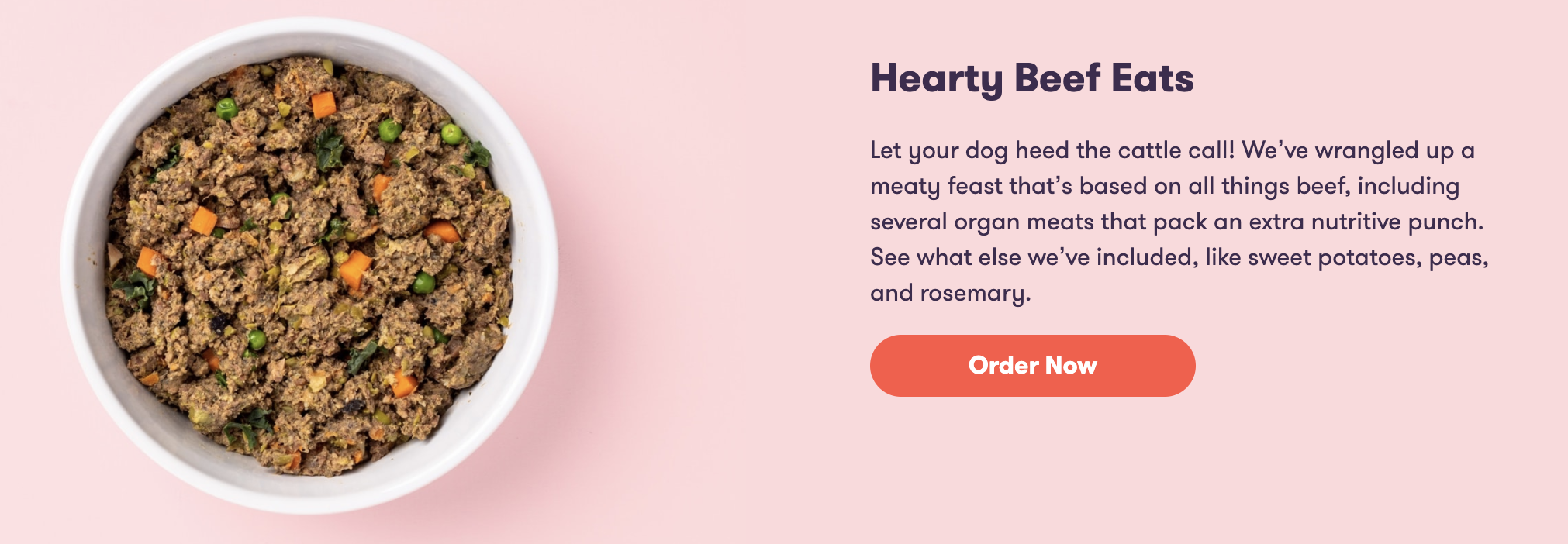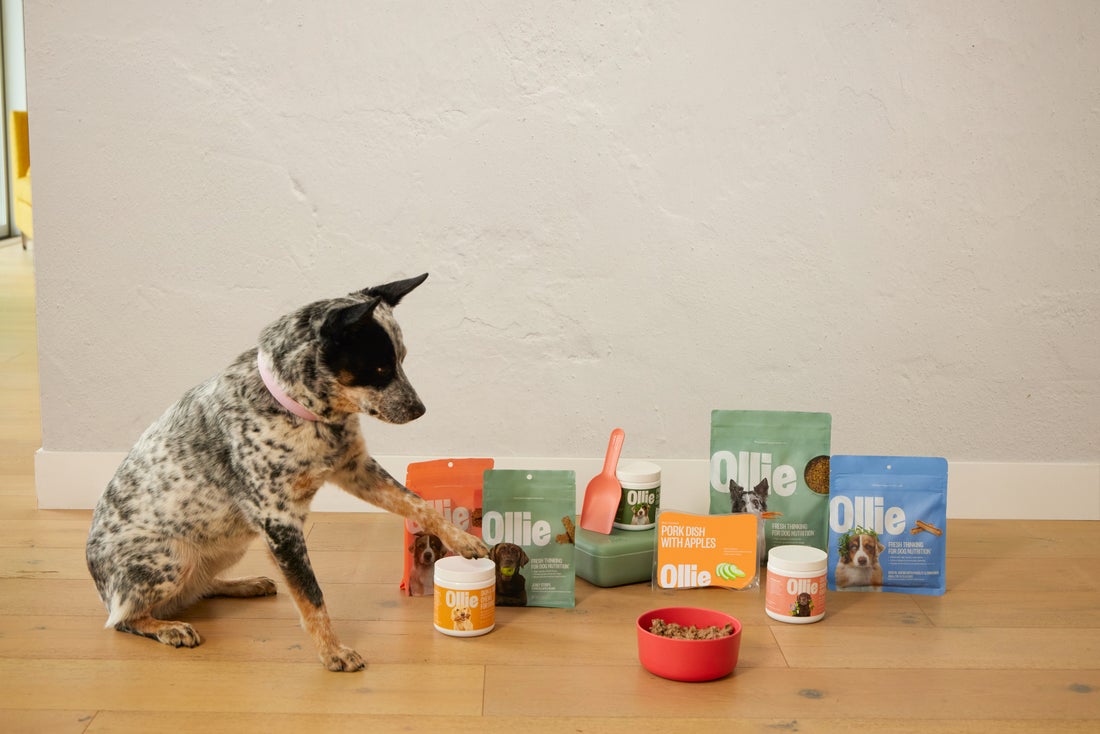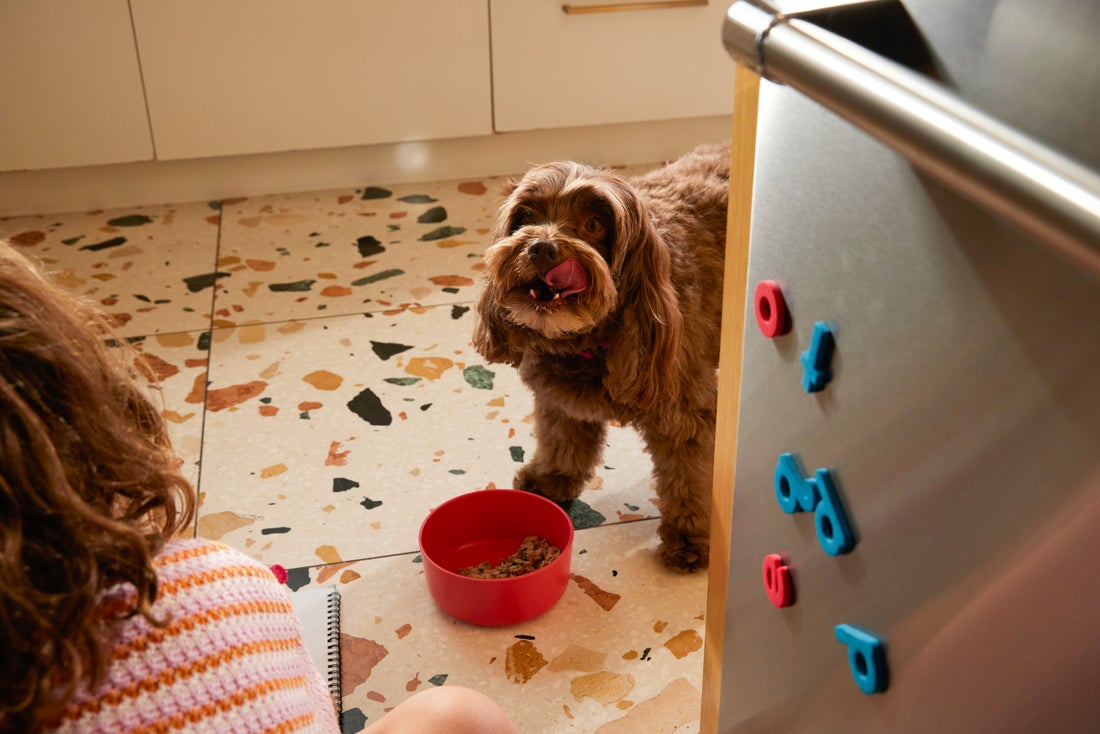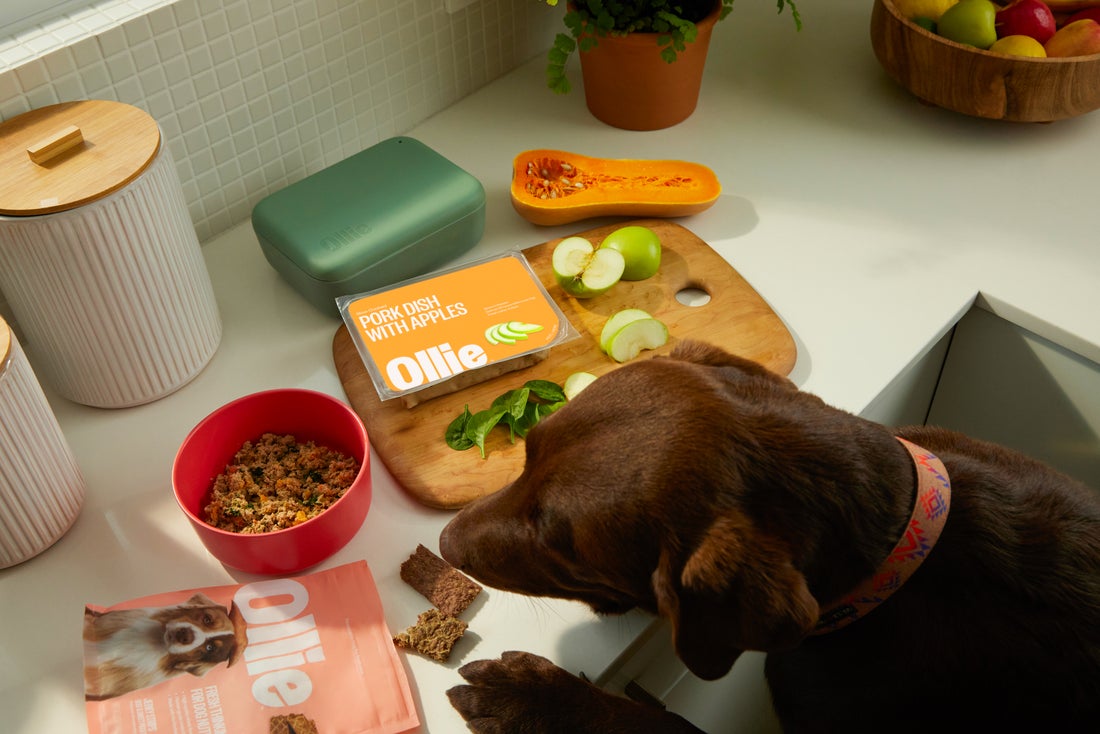Hey Ollie blog readers! We’re offering you an exclusive 60% OFF your starter box! Try now!
A healthy diet is one of the most important ways you can protect your dog’s overall health. Not only is it important to protect your dog from foods they are allergic to, but you also want to keep them from eating anything toxic. When choosing foods to feed you want to select food that provides enough calories, fat, protein and nutrients to keep your pup at a healthy weight and protect them from getting sick due to nutritional deficiencies. One food you want to make sure your pup never eats is chocolate. While this seems to be common knowledge among most dog owners many don’t know why they need to avoid feeding or letting their pups get into the chocolate stash. We looked at the science behind why dogs can’t eat chocolate and what to do if your dog gets into some.
Why can’t dogs have chocolate?
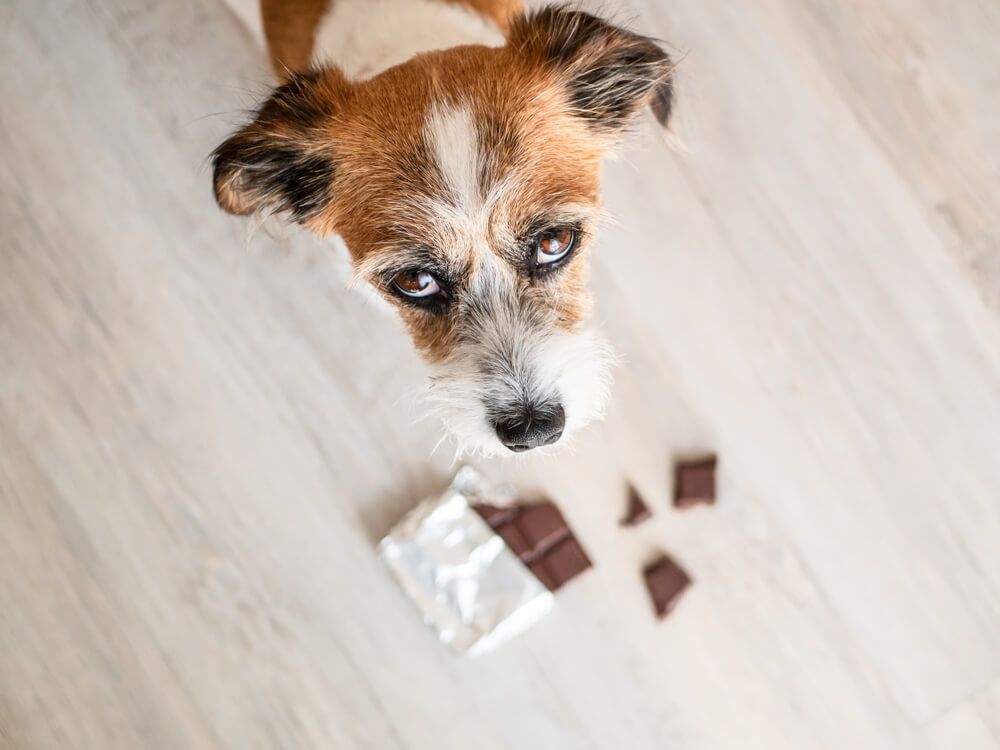
Chocolate contains Theobromine, a caffeinelike molecule that increases blood flow to the brain. It is so hard for dogs to process that they can easily eat enough to be poisonous. Few dogs eat fatal amounts of chocolate, but smaller doses can still cause seizures and other (serious) symptoms.
“Baking chocolate and gourmet dark chocolate are highly concentrated and contain 130-450 mg of theobromine per ounce, while common milk chocolate only contains about 44-58 mg/ounce. White chocolate barely poses any threat of chocolate poisoning with only 0.25 mg of theobromine per ounce of chocolate (that said, dogs can still get sick from all that fat and sugar, which can cause pancreatitis).” writes Dr. Anha Brutlag for VCA Hospitals. “To put this in perspective, a medium-sized dog weighing 50 pounds would only need to eat 1 ounce of baker’s chocolate, or 9 ounces of milk chocolate, to potentially show signs of poisoning. For many dogs, ingesting small amounts of milk chocolate is not harmful.”
Even if your dog doesn’t get enough Theobromine through the chocolate to get sick, feeding chocolate or any other type of candy or processed sugar is not a good idea for your dog’s overall health. Your pup is at risk for obesity and diabetes. Treats of any kind (sweet or savory) should be kept to 10% or less of your dog’s overall diet to keep your pup at a healthy weight.
You may think you’ve seen chocolate on some gourmet dog treats at your local pet store. Just to confirm, it could be a brown-colored frosting made with a food coloring or Carob. Many dog bakeriest use Carob coating or chips in their dog treats to mimic the look and flavor of chocolate and keep your dog safe. It does not contain Theobromine or caffeine like chocolate does and is considered safe for dogs. You should be able to ask for a complete list of ingredients. This will help you confirm that what is being used is actually carob and not milk chocolate as well as allow you to check for anything your pup might be allergic to. Its always better to be safe than sorry and proactively check the ingredients in any food or treat you are offering you pup!
6 symptoms of chocolate poisoning
Chocolate can cause some pretty serious issues for your pup if they eat enough of it. It is important to know what to look for, even if you aren’t positive that your dog got into some chocolate. The symptoms can vary in severity and like other toxic foods like grapes, your dog’s reaction can be different depending on how much they eat and how sensitive they are to the Theobromide. If you think (or know) that your dog has eaten chocolate, don’t wait until you see any of the symptoms below to reach out to your vet or animal poison control.
- Vomiting
- Diarrhea
- Restlessness
- Increased urination
- Tremors
- Seizures
Pet MD has put together a Chocolate Toxicity calculator that allows you to plug in your dog’s weight and the type of chocolate they ate. It will then give you an idea of the risk of illness and what to look for. In an emergency, you may want to skip the online tool and call the vet immediately. You could use this calculator just to get an idea of how much chocolate your dog would need to eat to constitute an emergency, just in case it happens. It’s always better err on the side of caution and have an idea of what your dog would need to eat in order to get sick. It might be more chocolate then you think, so don’t panic if you drop something tiny on the floor and your dog eats it. While this isn’t ideal, it also is not likely to be life-threatening.
What should you do if your dog has eaten chocolate
The most important thing to do is to call your vet or the animal poison control hotline. They will need to know your dog’s breed, weight, and age as well as how much and what type of chocolate your dog has eaten.
Do not induce vomiting unless you have been directed to by your vet or poison control. In most cases, inducing vomiting and giving activated charcoal to absorb the Theobromide are going to be the course of treatment for eating chocolate. If your pup has eaten a lot of chocolate and symptoms have progressed to some of the more severe symptoms listed above, your vet may need to treat your pup to stop any of these symptoms that are in progress.
Additional treatment can include IV fluids or medication to support your pup’s heart or stop seizures. Once your pet is stabilized, you might be able to take them home. Remember to follow any instructions the vet gives you carefully. This may include watching for certain symptoms, continuing medication and obviously ensuring that your dog doesn’t get into the chocolate again.
The Ollie blog is devoted to helping pet parents lead healthier lives with their pups. If you want to learn more about our fresh, human-grade food, check out MyOllie.com.
Tagged As:

The nutrition your dog needs,
the food they want.

Enjoying our articles? Subscribe our Newsletters and get new articles directly to your inbox
You might also like
18 July 2025
6 MINS READ
Can You Mix Fresh Dog Food With Kibble?
If you’re feeding your dog kibble but want to upgrade their bowl, you’re not alone. Many pet parents ask if they can mix fresh dog food with kibble to get some of the benefits of fresh food wi…
by Ollie Pets
18 July 2025
5 MINS READ
Does Fresh Dog Food Help With Weight Loss?
If you’ve noticed your dog carrying a few extra pounds, you’re not alone. According to the Association for Pet Obesity Prevention, over half of dogs in the U.S. are overweight or obese. Extra …
by Ollie Pets
18 July 2025
4 MINS READ
Is Fresh Dog Food Cooked or Raw?
When you hear “fresh dog food,” it’s normal to wonder if that means raw meat or something cooked. After all, fresh just means it’s not dry kibble or canned food packed with preservatives. …
by Ollie Pets
